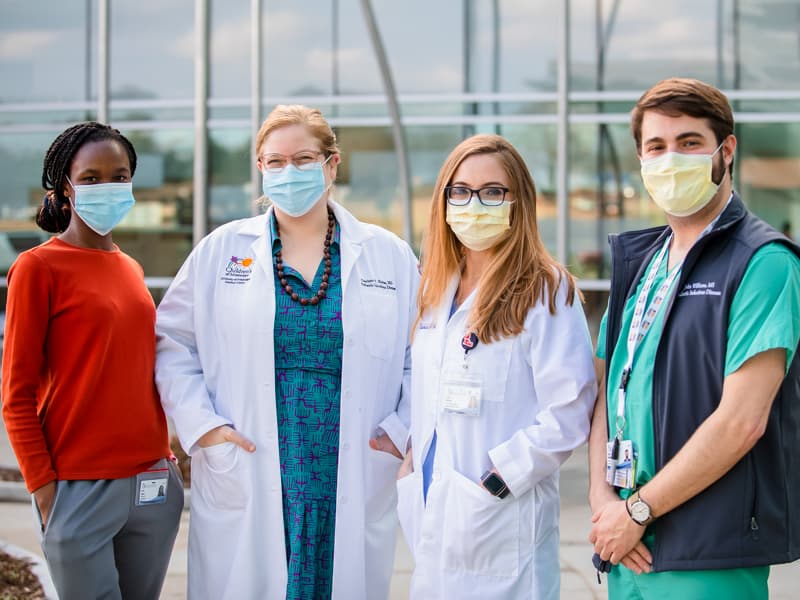UMMC study: COVID-19 more prevalent in children than thought

The number of Mississippi kids infected with the virus that causes COVID-19 during the pandemic may be much higher than previously thought, according to a new study led by the University of Mississippi Medical Center, Mississippi State Department of Health and the Centers for Disease Control and Prevention.
“While we see that younger children more commonly have milder disease with COVID-19, it turns out that there are a lot more kids infected with SARS-CoV-2 than case numbers indicate,” said lead author Dr. Charlotte Hobbs, professor of pediatrics and infectious diseases specialist at UMMC.

The study, currently on MedRxiv and set for publication in the March 4 issue of Morbidity and Mortality Weekly Report, evaluated blood serum samples collected from 1,603 individuals under age 18 collected at UMMC for routine laboratory testing between mid-May and mid-September 2020. The researchers tested the samples for SARS-CoV-2-specific antibodies. They then estimated the percentage of Mississippi children who had antibodies in each month of the study and compared that to the number of cases reported by MSDH.
The study found that the estimated percentage of Mississippi children with antibodies specific to SARS-CoV-2 increased from 2.6 of those collected in May to 16.9 percent of those collected in September.
“We found a steady increase in seroprevalence of about three percent per month, which parallels with reported case incidence in Mississippi during that time,” Hobbs said.
However, these values are substantially higher than the number of reported cases. For instance, the team estimated that nearly 118,000 children – about one out of every six -- had had SARS-CoV-2 infections by mid-September. The MSDH reported 9,044 cumulative COVID-19 cases during the same time, meaning that over ten times as many children had SARS-CoV-2 infections than thought.
Hobbs said the difference might be because children are more likely to be asymptomatic, or have less severe symptoms, of COVID-19 when infected. Because of this, a parent may be less likely to schedule a test for their child.
As of February 22, MSDH has reported 37,416 confirmed cases of COVID-19 among Mississippians under age 18.

“There is still much we do not know about the impact of COVID-19 in children. The potential for a much higher incidence of infection among children has broader implications. It is important that we continue to adhere to those measures we know prevent transmission, regardless of age,” said Dr. Paul Byers, state epidemiologist for MSDH and a co-author of the study.
The study also found that 4.3 and 2.4 times more Hispanic and Black Mississippi children had antibodies than non-Hispanic white children. This finding aligns with previously published data in Mississippi children.
Hobbs said that the results of this study can help inform public health policy and illustrates why measures to reduce COVID-19 transmission are so important.
“This study clearly shows that kids can be infected with this virus and underscores the importance of abiding by CDC guidelines to protect against infection for those across the age spectrum,” she said. This includes frequent hand-washing, wearing a mask for children aged 2 and over and social distancing when outside of their home.
The research also helps fill gaps in our understanding of COVID-19 in kids. The paper is the first U.S. study to examine seroprevalence exclusively in those under age 18 during the COVID-19 pandemic over such an extended period, including Mississippi’s first peak in COVID-19 cases, the summer surge, and the beginning of the return to school.
“Pediatric populations have been less studied in COVID-19, but we have to understand what is going on in children too and how this disease impacts them,” Hobbs said. “Understanding the burden of disease helps us take better care of children.”

